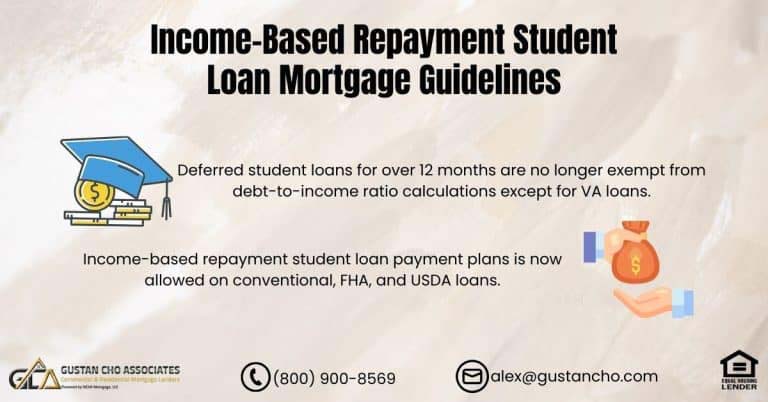This guide covers overlays on debt-to-income ratio on FHA loans. Homebuyers who got issued pre-approval from a mortgage loan originator but think that the loan amount is not enough may have options. Debt-to-income ratio is the determinant on how much borrowers can qualify for. Overlays on debt-to-income ratio can limit maximum loan amounts borrowers can qualify for. The reason mortgage loan originators issue a predetermined mortgage loan amount is from the income and credit analysis as well the down payment buyers put down.
Qualifying For Higher Loan Amounts
DTI is what determines the maximum loan amount borrowers qualify for. In this article, we will discuss and cover Overlays on debt-to-income ratio on FHA loans. What determines the amount of mortgage loan a borrower can get approved for is based on the following factors:
- Borrower’s credit scores
- Borrower’s down payment
- Most importantly, the borrower’s debt-to-income ratio.
The front-end ratio is the number of monthly housing expenses compared to monthly gross income. For example, say a home buyers principal and interest payment is $600.00. Monthly property taxes are $200,00. Homeowners’ insurance is $200.00. Total housing expenses are a total of $1,000.00. Homebuyers who have mortgage insurance and association fees would have to add those figures as well to housing expenses. Then take this figure and divide it by borrowers monthly gross income. Let’s say monthly gross income is $5,000.00. Dividing the $1,000.00 monthly housing expense by monthly gross income of $5,000.00. that yields a front end debt-to-income ratio of 20%.
Qualify for mortgage loan with Gustancho Associates, Click here
Agency Guidelines versus Overlays on Debt-to-Income Ratio By Lenders
The back end ratio is computed by comparing total monthly debts to monthly gross income. Monthly debt will include all of the monthly housing expenses PLUS all other expenses such as minimum monthly credit card payments, automobile payments, student loans, child support payments, and any other monthly obligations. Say other monthly payments are $1,000.00. So to calculate the back end ratio is to take monthly housing expenses of $1,000.00 and add the rest of the monthly debt obligations of another $1,000.00 and get total, which is $2,000.00. Take $2,000.00 and divide it by monthly gross income of $5,000.00 and that yields back end ratio of 40%.
The Importance of Debt-To-Ratios on FHA Loans
The Debt-to-Income Ratio (DTI) is an important factor in the approval process for FHA loans. FHA (Federal Housing Administration) loans are a type of mortgage loan insured by the government. FHA sets certain guidelines and requirements for borrowers, including DTI limits. As of the last HUD 4000.1 FHA Handbook Update on January 2024, here are some key points regarding DTI overlays on FHA loans:
Basic DTI Requirements
The FHA has specific DTI requirements that borrowers must meet. The standard DTI limit for FHA loans is 46.9% front-end and 56.9% back-end. This means your total monthly debt obligations (including your new mortgage payment) should not exceed 46.9% front-end and 56.9% back-end of your gross monthly income.
Manual Underwriting
In some cases, borrowers with higher DTIs may still be eligible for FHA loans but may need to undergo a manual underwriting process. Manual underwriting involves a more thorough review of your financial situation, including compensating factors that could offset a high DTI. While the FHA sets its guidelines, individual lenders may impose additional requirements or overlays on top of the FHA’s guidelines. These lender overlays can vary from one lender to another. For example, some lenders may have stricter DTI requirements than the FHA’s standard 43%.
Front-End and Back-End DTI
Lenders may also consider both front-end and back-end DTI ratios. The front-end DTI includes housing-related expenses (e.g., mortgage, property taxes, homeowners insurance), while the back-end DTI includes all debts, including housing expenses.
Compensating Factors
To qualify for an FHA loan with a high DTI, you may need to demonstrate compensating factors that strengthen your application. These factors could include a high credit score, a significant down payment, a stable employment history, or substantial cash reserves. Since lender overlays can vary, it’s essential to consult with multiple FHA-approved lenders to understand their DTI requirements and whether you qualify for an FHA loan based on your financial situation. Please note that FHA guidelines and lender overlays can change over time, so it’s crucial to check with a current source, such as an FHA-approved lender or the FHA’s official website, for the most up-to-date information on DTI requirements and overlays for FHA loans.
Submit your requirements and we will get back you with quote
What Are Overlays on Debt-to-Income Ratio
Most loan officers will probably maximize housing ratio and back end ratio at no greater than 46.9%/56.9%.. The above is the maximum DTI allowed to get an approve/eligible per AUS. However, depending on the type of lenders the loan officer works for, the lender may have overlays on debt-to-income ratio. Choose a loan officer who has no lender overlays on debt-to-income ratio. A home buyer mortgage applicant can use overtime income: This holds true as long as he or she had consistent overtime for a period of the preceding two years and the probability of future overtime looks promising
Borrowers who are on social security and are not taxed on social security income, social security income can be grossed up by 15% on FHA loans. On conventional loans, it can be grossed up 25%.
For example, here is a case scenario: if monthly social security income is $1,000.00 per month. The income can increase that by 15% to yield monthly income to $1,150.00 gross monthly income. Another way where borrowers can get more buying power on new home purchase is to lower debt-to-income ratio. This can be done by eliminating or reducing monthly expenses by paying down or paying off monthly debt obligation such as credit cards, student loans, or auto loans. Eliminating a $250.00 monthly automobile payment will get you an extra $70,000.00 worth of housing buying power. Home buyers with higher debt-to-income ratios who need to get qualified for FHA loans, please contact us at 1-800-900-8569 or text us for faster response. Or email us at gcho@gustancho.com.










